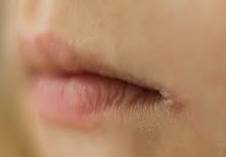What is Angular Stomatitis(口角炎)? - Dr Yeung 楊浩康

Angular Stomatitis is a common, non-contagious inflammatory condition that primarily affects the corners of the mouth. This inflammation is typically caused by prolonged exposure of the嘴角 to saliva and digestive enzymes, which gradually erode the skin’s surface, leading to localized inflammation. Environmental humidity, individual constitution, and deficiencies in certain vitamins may also exacerbate the condition. Since the lesion is confined to the corners of the mouth, Angular Stomatitis is often considered a minor, localized issue. However, if left unmanaged, it can lead to recurrent episodes or even secondary bacterial and fungal infections.
Symptoms and Causes of Angular Stomatitis
Clinically, Angular Stomatitis presents with a variety of symptoms, including pain, cracks, blisters, erosion, crusting, bleeding, and changes in skin color at the corners of the mouth. These symptoms may appear symmetrically on both sides, though some patients experience them on only one side. In mild cases, patients may only feel localized discomfort, while severe cases can involve intense pain that affects eating and daily communication, causing inconvenience in everyday life.
Treatment and Prevention Strategies
In many instances, Angular Stomatitis resolves on its own without specific treatment. However, for patients with pronounced symptoms or recurring episodes, proactive treatment becomes particularly important. Common treatments include using lip balm or moisturizers to keep the skin hydrated and protected, along with applying topical antiseptics to prevent infection. When bacterial or fungal infections are suspected, doctors may prescribe appropriate topical antifungal or antibiotic ointments based on the underlying cause. Additionally, in cases of severe inflammation, the use of topical steroids can quickly alleviate pain and swelling.
Certain common misconceptions often lead parents and patients to worry excessively. Some mistakenly believe that Angular Stomatitis is directly linked to systemic diseases, when in fact it is merely a localized dermatitis. Others assume that any crack at the corner of the mouth requires aggressive medication, but in reality, unless symptoms are severe, basic care is usually sufficient. Experienced dermatologists will tailor individualized care plans based on the severity of Angular Stomatitis, avoiding unnecessary overtreatment.
In a clinical case, a young female patient who worked in a cold environment for extended periods and frequently had moist corners of her mouth experienced recurrent cracks and small blisters, resulting in unbearable pain. After a thorough examination, a doctor diagnosed her with Angular Stomatitis and prescribed a topical antibacterial ointment alongside daily moisturizing care. Following a period of treatment, her symptoms significantly improved, and recurrences became infrequent. This case highlights the importance of accurate diagnosis and targeted treatment.
Moreover, daily care is key to managing Angular Stomatitis. Keeping the corners of the mouth dry and clean is especially critical. Parents can gently clean the affected area with warm water in daily routines and pat it dry with a soft towel. It’s advisable to avoid licking or touching the corners of the mouth with hands to prevent introducing additional bacteria. For individuals frequently in humid environments, regularly applying or using lip protection products can create a protective barrier, effectively reducing damage and infection risk. Additionally, appropriate dietary adjustments can help maintain skin health and promote healing.
In summary, while Angular Stomatitis is a common and localized skin inflammation, its tendency to recur and susceptibility to secondary infections make proactive prevention and care essential. Through daily cleaning and moisturizing, topical medication, and sensible dietary adjustments, most patients can effectively manage symptoms and reduce recurrence. Understanding and correctly recognizing Angular Stomatitis can help alleviate unnecessary panic and enable patients to choose appropriate treatment plans under professional medical guidance, thereby maintaining a healthy and comfortable quality of life.
